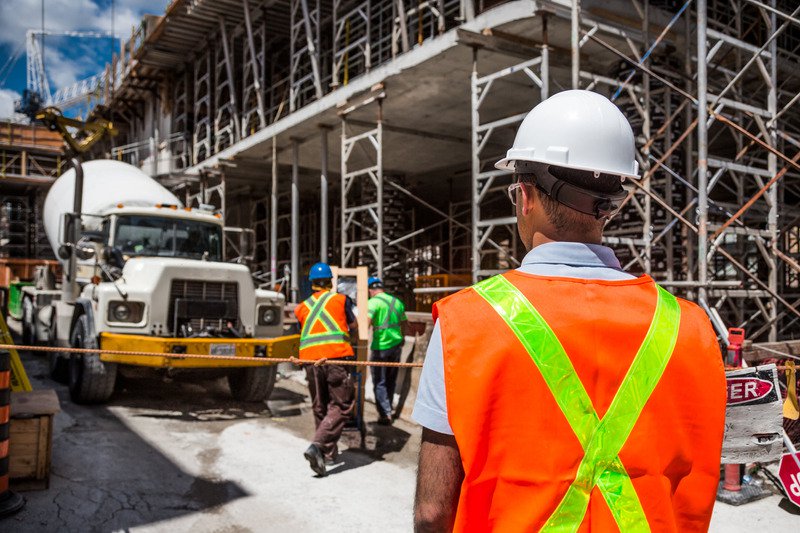 Occupational Health can be a confusing and occasionally hidden issue or risk for management to consider within an organisation. There is a focus on the more prominent risks that employees face during day-to-day work activities be it simply working with hand tools, working at height or working in and around heavy machinery. The immediate, sometimes obvious and occasionally potentially catastrophic, consequences of accidents occurring with regards to these everyday risks will naturally draw our attention. However, it is important to remember that the term we use, and used in regulatory requirements, is Health & Safety, not just the latter word in the common pairing.
Occupational Health can be a confusing and occasionally hidden issue or risk for management to consider within an organisation. There is a focus on the more prominent risks that employees face during day-to-day work activities be it simply working with hand tools, working at height or working in and around heavy machinery. The immediate, sometimes obvious and occasionally potentially catastrophic, consequences of accidents occurring with regards to these everyday risks will naturally draw our attention. However, it is important to remember that the term we use, and used in regulatory requirements, is Health & Safety, not just the latter word in the common pairing.
A large part of Occupational Health is having the knowledge of how your working activities can negatively affect the health of employees over a prolonged period of time. Most notably in the H&S profession, we consider:
- Aspects of long-term noise exposure causing workplace hearing loss
- Working in dusty environments leading to lung and breathing issues
- Use of vibrating equipment causing what is commonly known as white finger or more technically Hand Arm Vibration Syndrome.
- Simple repetitive manual handling processes leading to long term damage strains and back damage that can be incredibly debilitating.
- Even a night shift worker has to be assessed differently from a day shift worker in that human beings are not naturally nocturnal, therefore, the effects this could have on a person’s mental health need to be considered.
In exactly the same way that the Health and Safety at Work Act 1974 and Management of Health & Safety at Work Regulations 1999 instructs employers to ensure the safety of employees from immediate risks, we also have a duty to ensure the long-term health of those same people when such longer-term hazards are present in the workplace. Statistics from the Labour Force Survey over 2019/2020 show that 1.6 million UK employees are suffering from work-related ill-health, highlighting how it is still very much an issue that needs to be considered.
How Do I Protect My Workers?
To ensure employees are suitably protected from such long-term effects, the works they undertake which expose them to such hazards must be avoided if possible and thoroughly assessed if unavoidable. As a part of this assessment a number of controls can be introduced:
- Firstly, it is important to ensure when taking on new employees an employee is aware of any ill health they may already have so as to not put them in any position where an existing condition may be worsened. Annual health questionnaires focusing on the areas of a person’s health that may be affected by their work are useful to get an idea of how an employee themselves feels about how their work may be affecting them. For example, if an employee regularly works with loud equipment, you should ask them if they struggle to hear normal conversations or have ringing in their ears (Tinnitus) during or after work.
- A further measure for workers more regularly exposed to health hazards as a part of their work is ongoing regular screenings by trained occupational nurses who can identify the onset or beginnings or worsening health within employees and advise additional controls to help manage risk for such persons. Whilst for the most part this level of control would be retained for the more rigorous working conditions an employee may be subjected to, there are some professions where this is a mandatory legal control, such as with asbestos removal professional and employees regularly working with lead.
Need Help? Get In Touch!
 WA Management are committed to ensuring the health of clients employees is not forgotten and have over a number of years been focusing on thoroughly assessing and controlling not only the immediate dangers faced by personnel but also the longer-term effects and sometimes potentially hidden health hazards that exist in everyday workers lives, and advising on what controls may be best suited, or even mandatory by law.
WA Management are committed to ensuring the health of clients employees is not forgotten and have over a number of years been focusing on thoroughly assessing and controlling not only the immediate dangers faced by personnel but also the longer-term effects and sometimes potentially hidden health hazards that exist in everyday workers lives, and advising on what controls may be best suited, or even mandatory by law.
So the next time you internally look at what time your workers are doing and how they may be better protected while they work, consider the long term effects that their works may have on them and if ever in any doubt about what may be best for them and your business, pick up the phone and let us know as we would be happy to assist!
Written by our Senior SHEQ Consultant, James Ross
